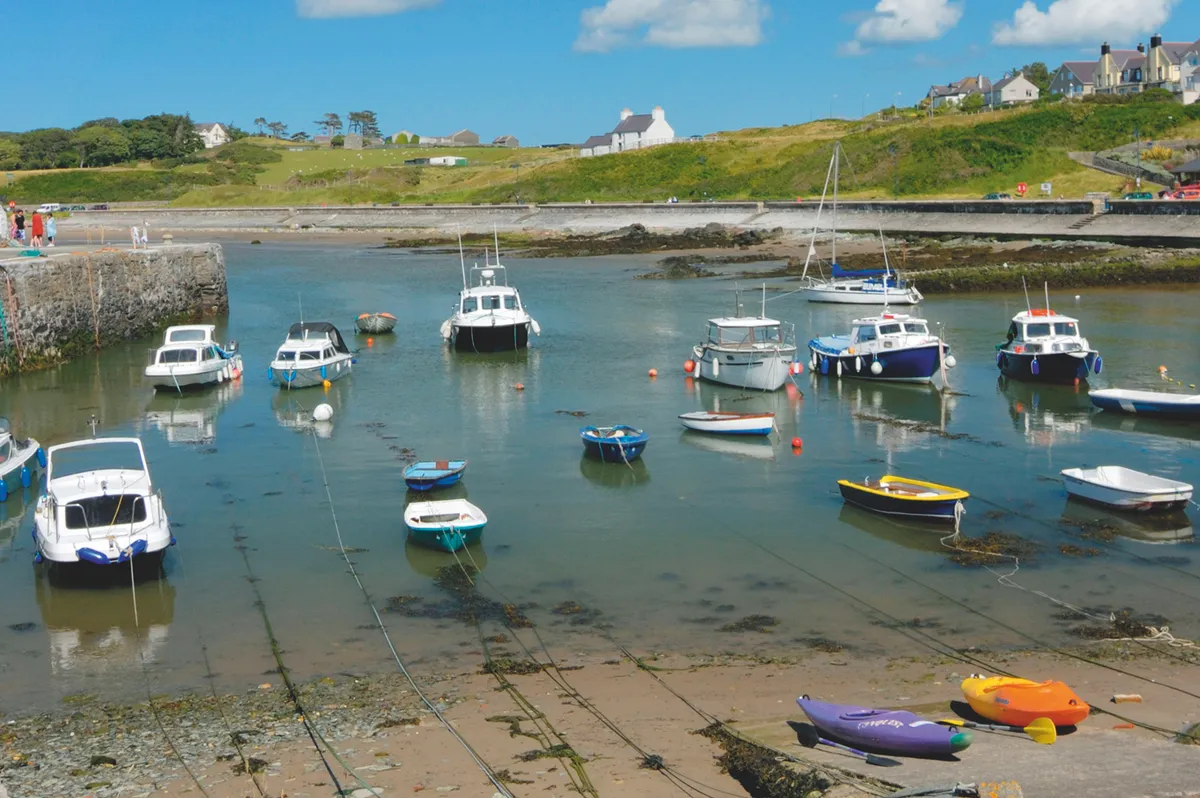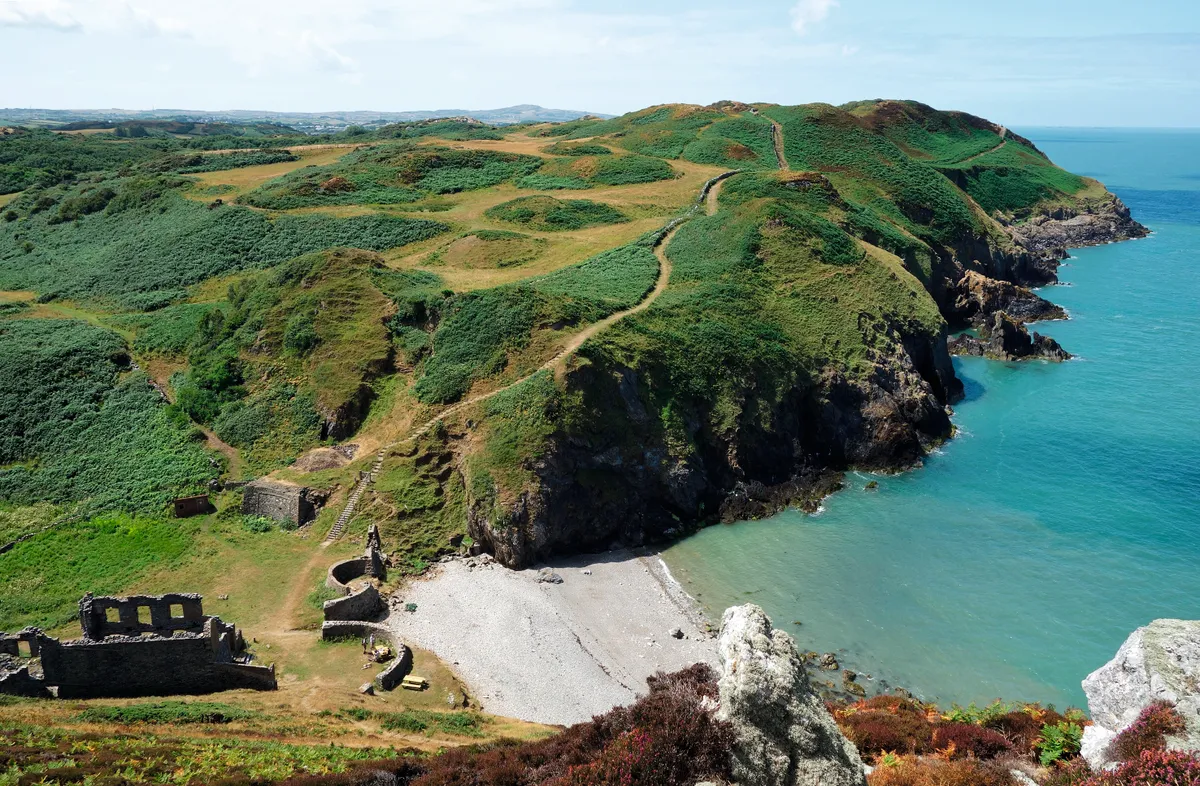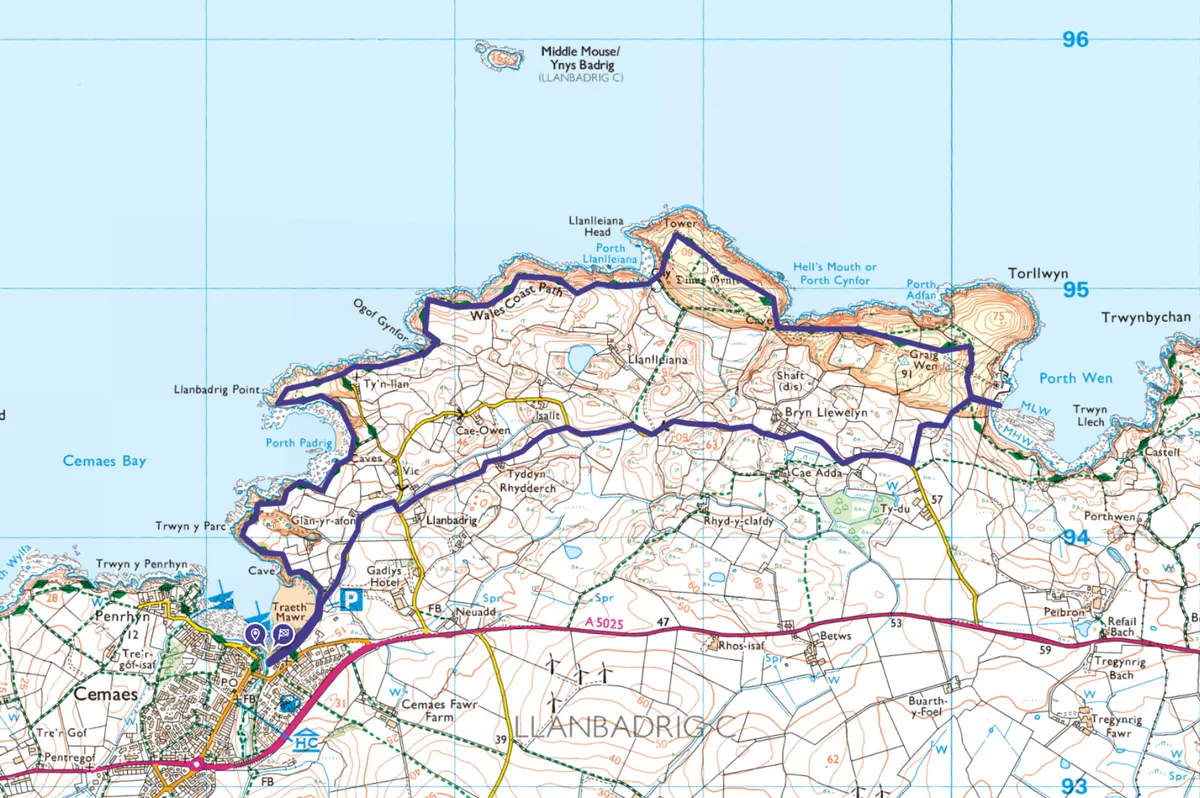The museum in Cemaes on Ynys Môn (Anglesey) maintains that there have been people living on this part of the island since the Stone Age. Anyone who has ever visited the little fishing port will find that claim perfectly plausible, because it inhabits an extremely appealing spot. Set above a cove that forms a natural harbour, the most northerly village in Wales straddles a crook of the River Wygyr and overlooks the sandy crescent of Traeth Mawr (‘big beach’).
The wild and bumpy coastline to the north-east is strewn with fascinating historical evidence of the goings on in this far-flung corner of Wales. It means that a walk along it does not merely offer the prospect of a pleasant day out. Come exploring here and you’ll find yourself tossed from one period of history to another in such an arbitrary manner that, by the end, you’ll suspect you’ve been riding in a time machine whose controls have been set to ‘random’.

Cemaes to Porth Wen walk
5.9 miles/9.5km | 4 hours | moderate–challenging
1. Bay and beyond
Skirting lovely Traeth Mawr and following the signed coast path, your first stop out of Cemaes is Eglwys Llanbadrig. Set in a graveyard high above the waves, this is believed to be the oldest established church in Wales. St Patrick himself is said to have founded it in 440AD after clambering ashore nearby when his boat was wrecked on a voyage from Iona to Ireland. Come on a clear day and you may not just see the Lake District and the Isle of Man but right across the sea to Northern Ireland’s Mountains of Mourne.
2. Cove tower
Pressing further along, the sight of a tall chimney and the ruins of a substantial stone building in a steeply sloping dell give away the unlikely existence of a former industrial site. Built in the mid-19th century (possibly on the site of a nunnery), the works at Llanlleiana produced porcelain from china clay quarried at nearby Dinas Gynfor. Irreparably damaged by fire in 1920, it has been left to the elements ever since.

3. Cetacean watch
The lookout tower above it was constructed in 1901 to celebrate Edward VII’s coronation and is a thing of prodigious ugliness (except, perhaps, to fans of the Brutalist school of architecture). However, its redeeming feature is that it makes for an excellent spot to sit and scan the waters below for dolphins, porpoises or maybe even an orca.

4. Clifftop fort
The tower is perched on the edge of Dinas Gynfor. Long before it was quarried for china clay, this rocky high ground protected by cliffs and the sea on three sides was employed by ancient Celts as a hill fort. The rampart they threw up on the landward side can still be made out.
5. Brickworks
But perhaps the most impressive of all the historical attractions along this stretch of coast is the Porth Wen brickworks. The former factory is now a designated scheduled monument and has become a destination in its own right. Originally established by one Charles E Tidy around 1850, it was abandoned by the end of the century only to be replaced by a larger works that were completed in the 1920s. Porth Wen had its own little harbour and turned locally quarried quartzite into fire bricks for use in steel furnaces. Remarkably, the three beehive brick kilns are still intact – they sit in a row like small alien spacecraft that have used the site as a convenient landing strip.

Although decommissioned in 1949 – principally on account of its remote location – it remains an extraordinary sight. Along with the buildings and chimneys, there is also plenty of venerable equipment still in situ such as a stone breaker, boilers and the remnants of a steam engine. With just a little effort, it’s possible to imagine the whole works thrumming with life. Access is via a footpath down to the shore but do remember that this is a former industrial site, so mind how you go.
6. Inland return
You now have two options; retrace your steps, experiencing the coastline’s wonderful sea views from a whole new perspective; or return to Cemaes via an inland route using minor roads and footpaths. For the latter route, leave Porth Wen on the south-west path, turning right at the minor road. After a mile, leave the road to the left on a waymarked footpath to reach another minor road half a mile on. Turn right on the road and shortly after left to descend back into Cemaes.
Cemaes to Porth Wen map
Cemaes to Porth Wen walking route and map


